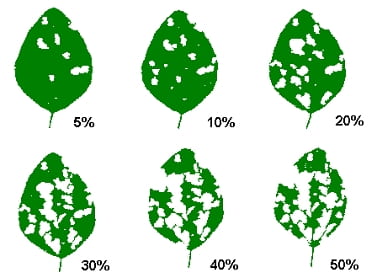David Owens, Extension Entomologist; owensd@udel.edu
Alfalfa
Be on the lookout for potato leafhoppers. Leafhoppers are active in the region and can cause yield loss before visible symptoms develop. When feeding, leafhoppers inject a toxic saliva into the plant that causes yellowing at the leaflet tips, or ‘hopperburn.’ The action threshold for number of leahoppers per 100 sweeps depends on alfalfa height and growth stage. Refer to the UD factsheet here: http://extension.udel.edu/factsheets/potato-leafhopper-control-in-alfalfa/
And insecticide recommendations here: https://cdn.extension.udel.edu/wp-content/uploads/2012/05/25073121/Insect-Control-in-Alfalfa-2018.pdf.
Soybean
Early season defoliators are active, and include bean leaf beetle, bean leafroller, green cloverworm, yellow striped armyworm, leafhoppers, and thrips. Thrips feeding is typically concentrated in a narrow time window and does not cause economic injury unless fields are under severe drought stress. You will see silvery streaks on leaves. Leafrollers hide during the day by cutting and folding leaf sections over themselves. Defoliation thresholds during vegetative stage soybean are very high, over 35%. Defoliation is easy to over-estimate, our eyes are drawn to what’s different or concerning, in this case, holes in the leaves. It is important to consider whole canopy defoliation, not just upper leaflet defoliation. I like to mentally divide the leaflet up into quarters and try to piece the holes into those quarters as if it were Tetris. The below image is a good guide for estimating defoliation:

